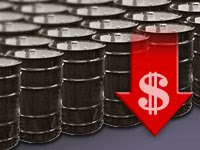
Good day to you.
US stocks closed mostly higher Wednesday after the Fed said the economy was on the mend and orders for big-ticket manufactured items posted an unexpected increase. Although DJIA fell modestly, the broader market measures ended the day with gains. The central bank's decision to leave its key lending rate at a low of zero to 0.25 % was anticipated. DJIA fell 0.3 %, S&P 500 index rose 0.7 %, Nasdaq composite index rose 1.6 %.
Major Southeast Asian stock markets rose on Wednesday, ending two days of falls, with financials and energy heavyweights leading the way ahead of news from a U.S. Federal Reserve policy meeting. Indonesia leads regional gains, jumping 4.3 %.
The market surge to bargain-hunting but said that concern over the outlook for the global economic recovery would continue to keep markets in check.
STI climbed 2.4 %, SETI rose 2 %, JCI jumped 4.3 % after a combined fall of around 4 % over two days, boosted by gains in energy-related and banking stocks.
Crude oil for August delivery fell 57 cents, or 0.8 percent, to settle at $68.67 a barrel. Tin rose 1.1 % to $14,750 a ton. Nickel climbed 6.1 % to $15,500 a ton. PALM oil futures yesterday tracked crude oil and soybeans lower on concern the global recession will slow demand for its use in food and fuel applications. Palm oil for September shed as much as 2.4 per cent to RM2,231 a ton.
After surge 4.3 % JCI still have room for upside. Strongest rupiah will support the market and some fund will maintain sentiment for window dressing at the end of June. We put range trading for JCI at range 1970-2035 index for today.
Commodity, especially on metal and energy will be a trigger for today. After Nickel surge 6.1% INCO and ANTM will be get positive issue. Top Pick still on TLKM for defensive stock, ANTM, INCO, TINS, PGAS, BUMI, BNBR, DEWA, ASII, BMRI, BDMN and BBRI.
We are maintain positive for our market with JCI target still at 2187.5 point index for year end.
“Planning for Growth”
[Personal Opinion ]
=====================================================================================
DISCLAIMER: This report is issued by [BRIGHT INFO]. Although the contents of this document may represent the opinion of [BRIGHT INFO]. We cannot guarantee its accuracy and completeness.











